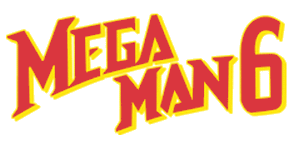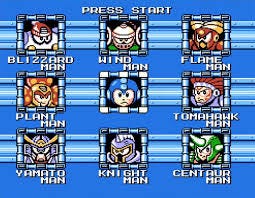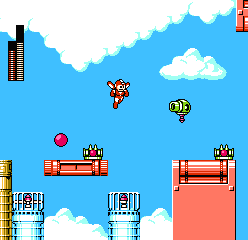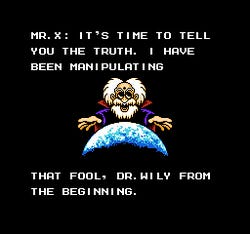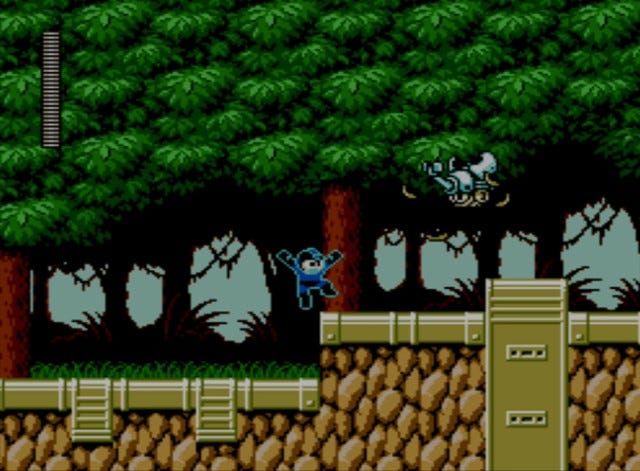By the time Mega Man 6 released in 1993 (Japan) and 1994 (North America), the NES was on its last legs. The Super Nintendo was already well into its life, and players were experiencing 16-bit classics like Mega Man X. Despite this, Capcom chose to put out one final entry on the NES before fully moving the series forward. Interestingly, in North America the game wasn’t even published by Capcom directly. Nintendo stepped in and handled publishing duties themselves, likely because Capcom had shifted its focus elsewhere.
Reception at the time was fairly muted. Critics and players alike noted that while Mega Man 6 polished the formula to its peak on the NES, it also felt more like “more of the same.” By the sixth game, the series was starting to show fatigue, even if the gameplay was still solid. For fans, though, it was another chance to dive into the blue bomber’s classic run-and-gun platforming, and it remains a fondly remembered (if slightly overlooked) swan song for Mega Man on the 8-bit hardware.
What I Liked 😃
The Best Looking NES Mega Man
Even though the NES hardware was outdated by 1993, Capcom squeezed every last drop out of it. Mega Man 6 has the cleanest sprite work and most detailed backgrounds of the series on the system. Animations felt smoother, enemies had more personality, and the stage designs had a richness that earlier entries didn’t quite capture. It really felt like a “victory lap” graphically. This was almost expected however due to 5 previous entries that Capcom used to perfect their development processes and wring every last bit of graphical fidelity out of the NES hardware. Enemies and characters have more detail, there are more animations overall and the stage design is immaculate.
Rush Overhaul
Rush, Mega Man’s robotic canine companion, got a major upgrade in this installment. Instead of functioning solely as items you summon temporarily, the Rush Adapter powers fused with Mega Man to give him new abilities: the Power Suit for smashing through obstacles and the Jet Suit for limited flight. These weren’t just gimmicks, they added a lot of variety to gameplay and gave stages multiple approaches. Sure, they made some sections easier than intended, but they also gave you freedom to experiment.
Cutscenes
For a NES game, the story presentation was top-notch. The narrative sequences, while very rudimentary and rote at this point, added some flair and made the adventure feel grander. The improved sprite work in the scenes and more of a script made Mega Man 6 feel bigger than it actually was. They may not be as elaborate as what came later in the Mega Man X series, but they were a nice touch to close out the NES era. The animations that play after Mega Man gets a new ability were also welcome. Rather than stiff or completely missing animations, Mega Man will wind up his buster shot as he is transitioning to the new power. Then we get to see an in-game Mega Man use the power so that the player knows how it will function before using it. It’s a very small touch but these small changes overall enhance the game overall.
Plant Man Stage
The first half of Plant Man’s stage is a breeze. Enemies will pop out of the trees or these frog-like robots will jump around. It’s no big deal. But once the first half is over, the stage introduces these super annoying springs that Mega Man must use to propel himself across bottomless pits. The stage also introduces some spikes and platforms that must be shot to activate. All of this combined made for a frustrating stage. The spring gimmick was not fun, and the whole stage was more annoying than challenging. No thank you.
Overall Thoughts 🤔
Mega Man 6 may not be the most challenging game in the series, but it’s still a worthy sendoff for the blue bomber’s NES adventures. The difficulty curve is noticeably gentler than earlier titles. I found myself breezing through most stages and rarely needing to reload. That said, the game shines in presentation. The graphics are easily the best in the NES lineup, the Rush power-ups were a fantastic innovation (even if they occasionally broke the balance), and the cutscenes gave it more flavor than past entries.
The soundtrack, while solid, didn’t quite hit the same highs as Mega Man 2 or Mega Man 3. There weren’t any tracks that embedded themselves in my memory after playing, but the music was still well-crafted and enjoyable in the moment. Even the worst Mega Man soundtrack is still very well done.
Overall, Mega Man 6 is often overlooked, but it deserves recognition as a polished and fitting conclusion to Mega Man’s 8-bit journey. It might not top the series in difficulty or originality, but it closes out the NES era with style.
Where Can I Play This? 🕹️
As usual, the NES Mega Man games are most easily playable via the Mega Man Legacy Collection for the Nintendo Switch, Xbox One, PlayStation 4 and PC.
I played Mega Man 6 physically on the NES. I defeated all Robot Masters and got through Mr. X….err Wily’s Castle stages and rolled credits.
Up Next 📅
Up next, we’re heading back to the post apocalyptic/wild world of the Horizon series with Horizon: Forbidden West!


